Bathroom Safety Tips for Seniors
Falls are among the most dangerous accidents for people over age 65. Senior citizens are more likely to fall due to muscle weakness, poor eyesight, and medical conditions that can cause dizziness. Read on to see our top bathroom safety tips.
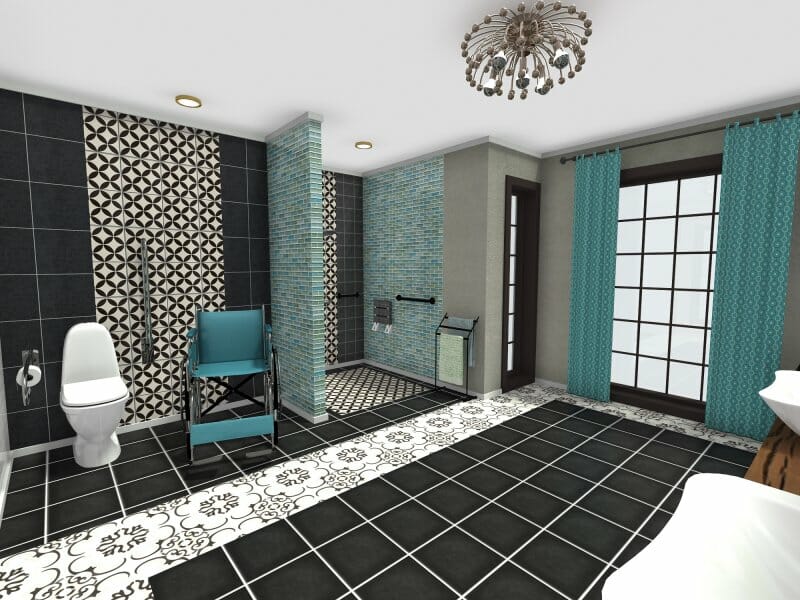
f you are remodeling a bathroom that will be used by a senior, our top bathroom safety tips include:
- Remove hazards
- Increase lighting
- Add assistive devices
Read on for more information on each of these important topics.
Remove Hazards
Rugs can be a trip hazard, so tape them to the floor or remove them. This is one of the easiest changes you can make to improve bathroom safety.
If you are planning a remodel, you can add heating under the floor for warmth, and choose a floor pattern that provides interest without the need for a rug, such as in the 3D Photo above.
If possible, choose a shower that a user can walk (or roll) directly into, rather than a bathtub/shower combination.
Stepping in and out of a bathtub/shower, or losing balance and falling over the side while in this type of shower, is a safety risk. If a bathtub is a must, consider a walk-in bathtub or a separate shower and bathtub.
Make sure the bathroom floor is not slippery. You can check the slip rating for the material on the floor. If the floor is slippery when wet, you can add anti-slip coating or tape.

When choosing tile for the shower floor, choose a smaller tile with more grout (which provides more grip) as shown above or add non-slip tape.
Increase Lighting
Most seniors have reduced vision so it’s important to carefully consider the lighting in the room.
There should be plenty of lighting and it should be bright. The bathroom shown above includes recessed lighting in the shower, plus a glass wall rather than a shower curtain, all of which help make the area bright.
Also, consider installing night lights to clearly illuminate the bathroom at night. Motion sensor lights are helpful for people with limited mobility.
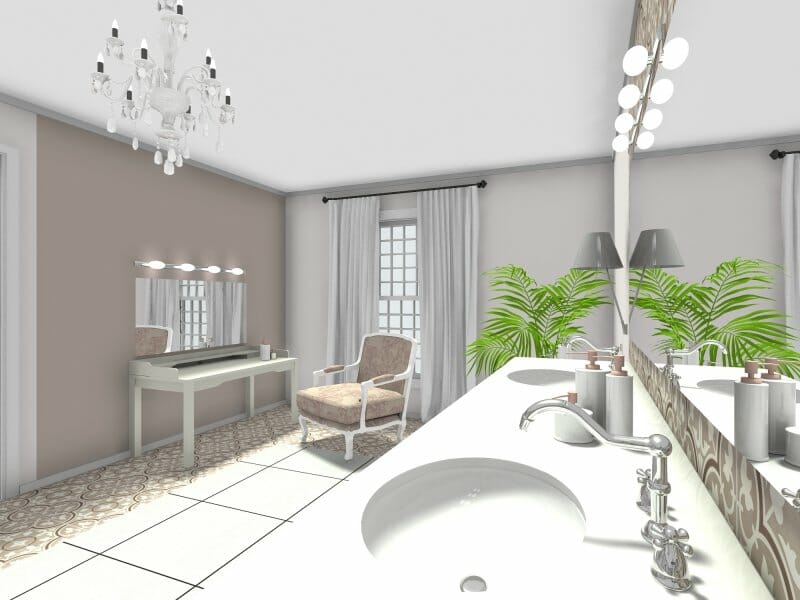
This bathroom includes bright lights above the double vanity mirror, lights above the makeup table, and a chandelier, for a bright and welcoming room.
Add Assistive Devices
There are a wide variety of assistive devices that you can use to improve safety in the bathroom. Some of the most used are:
Shower grab bars
Grab bars are very important in the shower. The Americans with Disabilities Act design standards have specific guidelines for grab bars, which you can review.
Generally, it is recommended that grab bars be installed on all three walls of a standard roll-in shower and a maximum of 6” from an adjacent wall. When a seat or bench is provided, grab bars are not placed above the seat.

Bathtub poles
If there is a bathtub in the bathroom, you can add grab bars or a handy device called a grab pole to make it easier and safer to climb into and out of the bathtub.
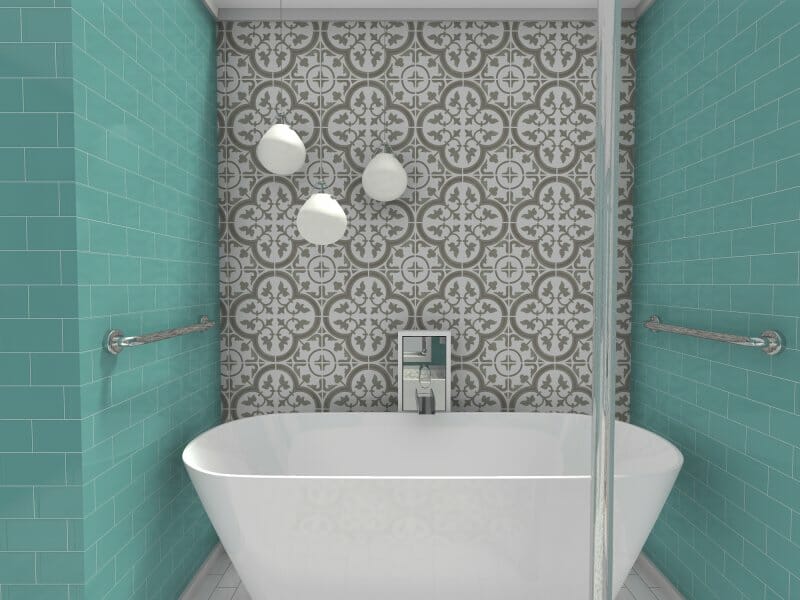
Toilet grab bars
Another option for grab bars is to add them on either side of the toilet as shown below. The unit shown attaches to the toilet, and you can also purchase grab bars that attach to the walls adjacent to the toilet.
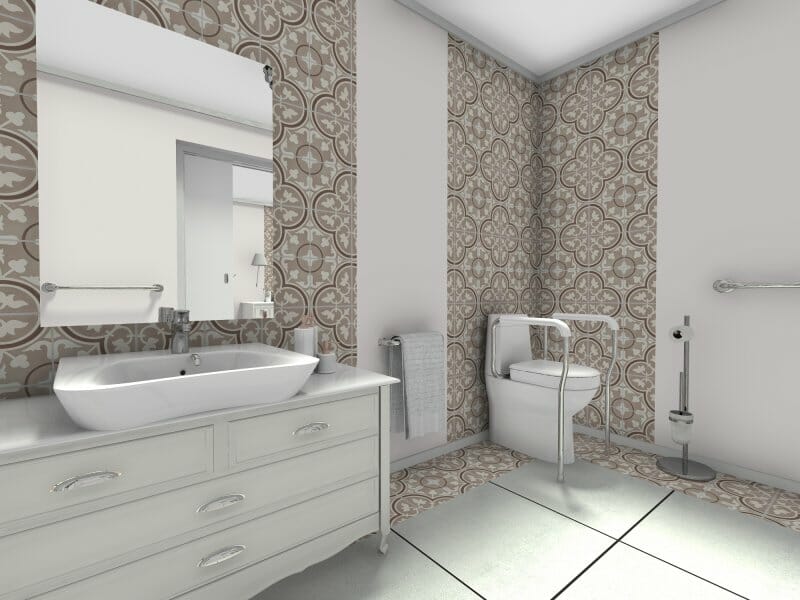
More Helpful Aides
A bench, stool, or chair can be added to the shower to allow a senior to sit while bathing. You can even get handy fold-out chairs that take minimal space and can be flipped out and used if needed. A higher toilet seat can also be useful, and make it easier for a senior to use the restroom without assistance from another person.
Get Started
By proactively installing safety features in your home, or the homes of any aging relatives, you are taking the extra steps to avoid accidents and keep everyone safer as they age.
These bathroom safety design ideas were created using the RoomSketcher App.
Don't forget to share this post!
Recommended Reads

How to Make Your Home Wheelchair Accessible
With many new products and styles on the market today, you can to design a wheelchair accessible home that is functional and beautiful.
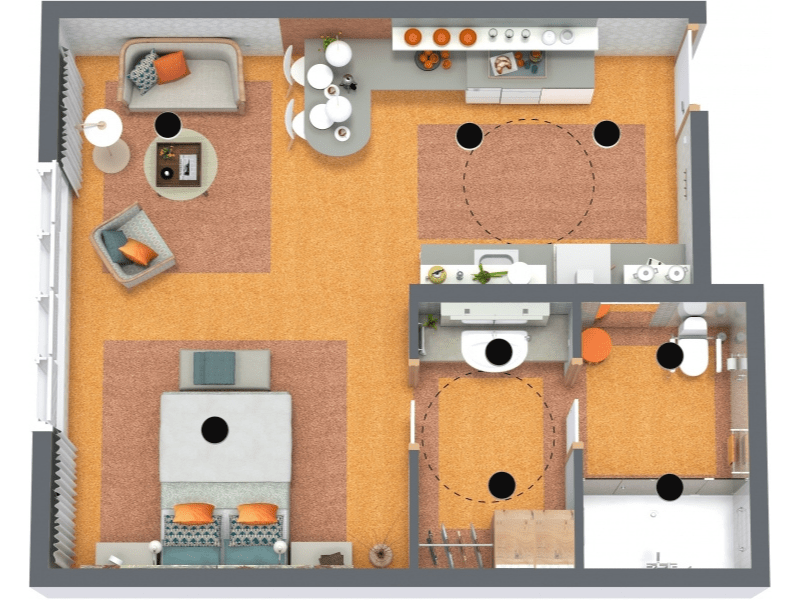
Apartment Floor Plan - Universal Design Ideas
Universal Design ideas that are easy to implement when designing your apartment. Lots of practical tips and inspiration. Learn more!
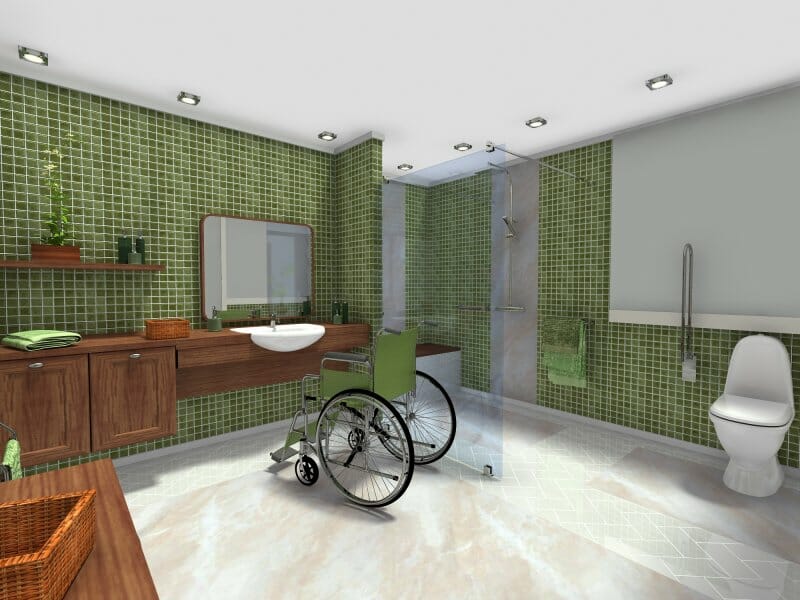
5 Tips for Designing Your Accessible Bathroom
Want to add accessible features to your bathroom floor plan? Read on for ideas, key dimensions, and beautiful inspiration photos.
